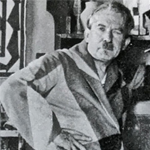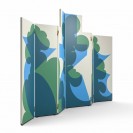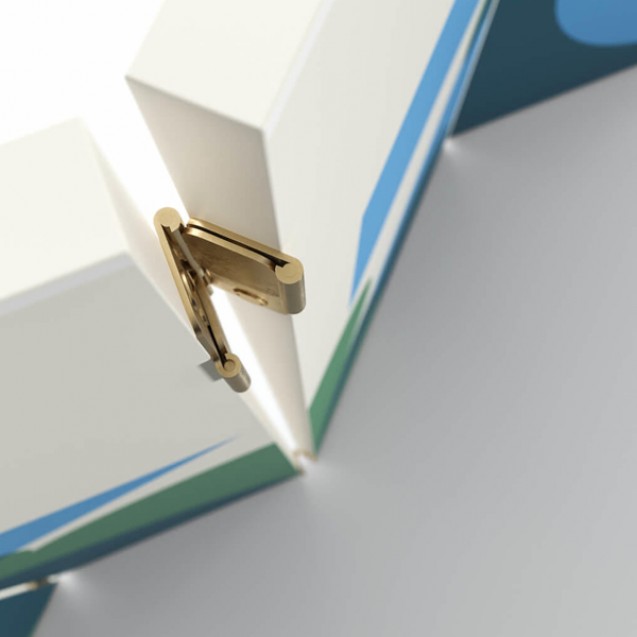330 Paravento Balla
This wooden screen is based on an original tempera and
pencil sketch on paper by artist Giacomo Balla. Today, Cassina revives this
brightly coloured accessory to divide and complete the various areas of the
house with a real artistic touch. The Balla Screen consists of three
honeycomb panels of different heights and widths joined together by brushed
brass double-action hinges specially designed by Cassina, carefully
interpreting the original design. The silk-screen printed decoration, on both
sides, is available in two versions, with orange background in the colours
yellow and green, respecting the shades in the Balla sketch, and with white
background in the colours blue and green. The Balla Screen, part of the
Cassina I Maestri Collection, bears the signature of the designer and a serial
number which guarantees the authenticity of the product.
| About Designer | |
|---|---|
Giacomo Balla |
Giacomo Balla (born in Turin on the 18th of July 1871 - died in Rome on the 1st of March 1958) was an Italian painter, sculptor, set designer and "freeword" author. He was a prominent exponent of Futurism and signed the manifestos sanctioning its theoretical aspects along with the other Italian Futurists. He was the only son of Giovanni and Lucia Giannotti; as an adolescent he showed interest in art and attended a three-year course at the Royal Academy of Fine Arts in Turin. In 1895 he left Turin to settle in Rome, where he remained for the rest of his life. He met Umberto Boccioni and Gino Severini in Rome in 1901 and painted some of his masterpieces, such as La Pazza. In 1904 he married Elisa Marcucci and his first daughter Lucia was born. After he joined the Futurist movement, he called his daughter Luce. Following Marinetti's publication of the manifesto Le Futurism in Le Figaro in 1909, in 1910 Balla signed the manifesto Futurist Painters and Futurist Painting. During this period, he painted some of his masterpieces, for example Girl Running on a Balcony and studies for Compenetrazioni iridescenti. His daughter Elica was born in 1914, whose name represents a tribute to Marinetti's motto. In 1915 he signed the manifesto Futurist Reconstruction of the Universe with Depero. In 1918 he published the Manifesto of Colour and in January 1920 he joined the editorial staff of the magazine Roma Futurista. In the same year he also decorated the Bal Tic Tac Cabaret, a Roman cabaret venue that was popular throughout the 1920s. In 1929 he moved to Via Oslavia 39b in Rome. In 1937 he wrote a letter to the newspaper Perseo in which he proclaimed his estrangement from "every Futurist event... in the belief that art is absolute realism". From that moment on he was side-lined by the official culture until the post-war revaluation of his works and Futurist works in general. |








